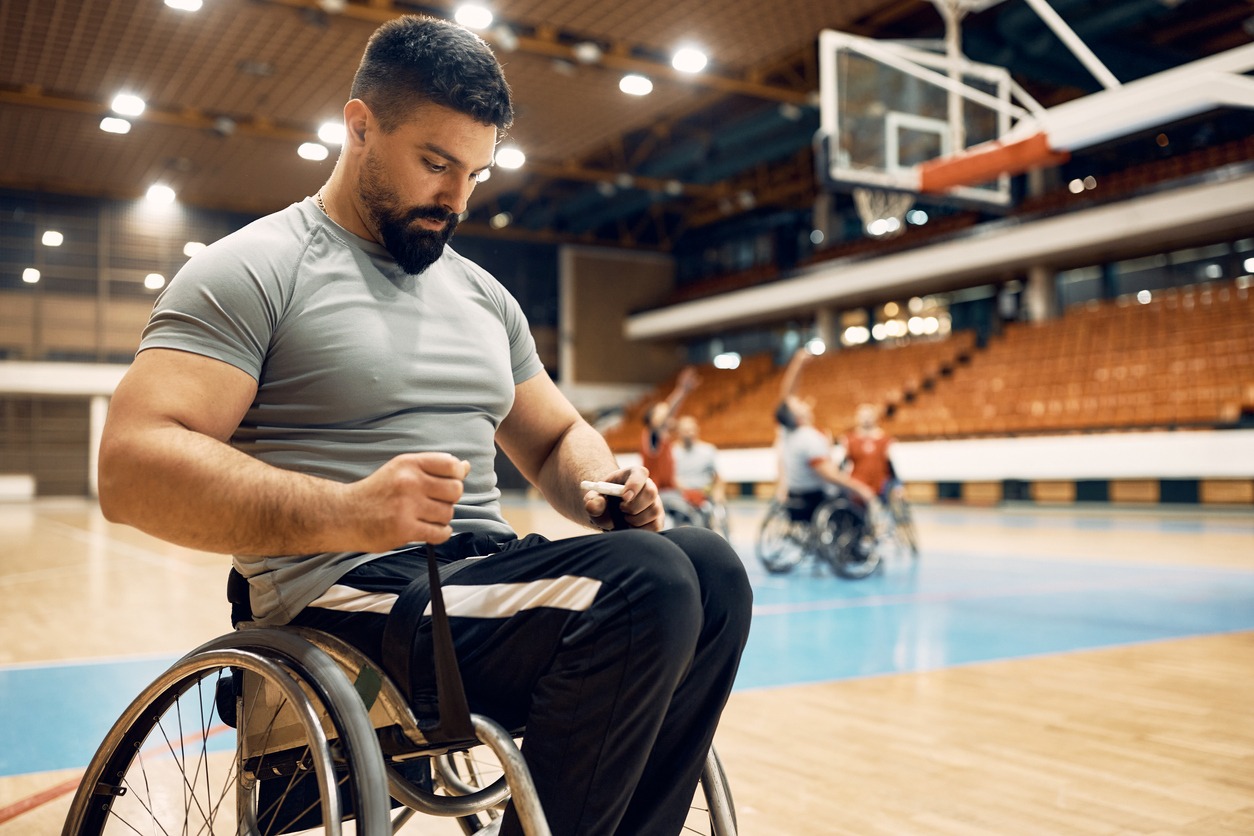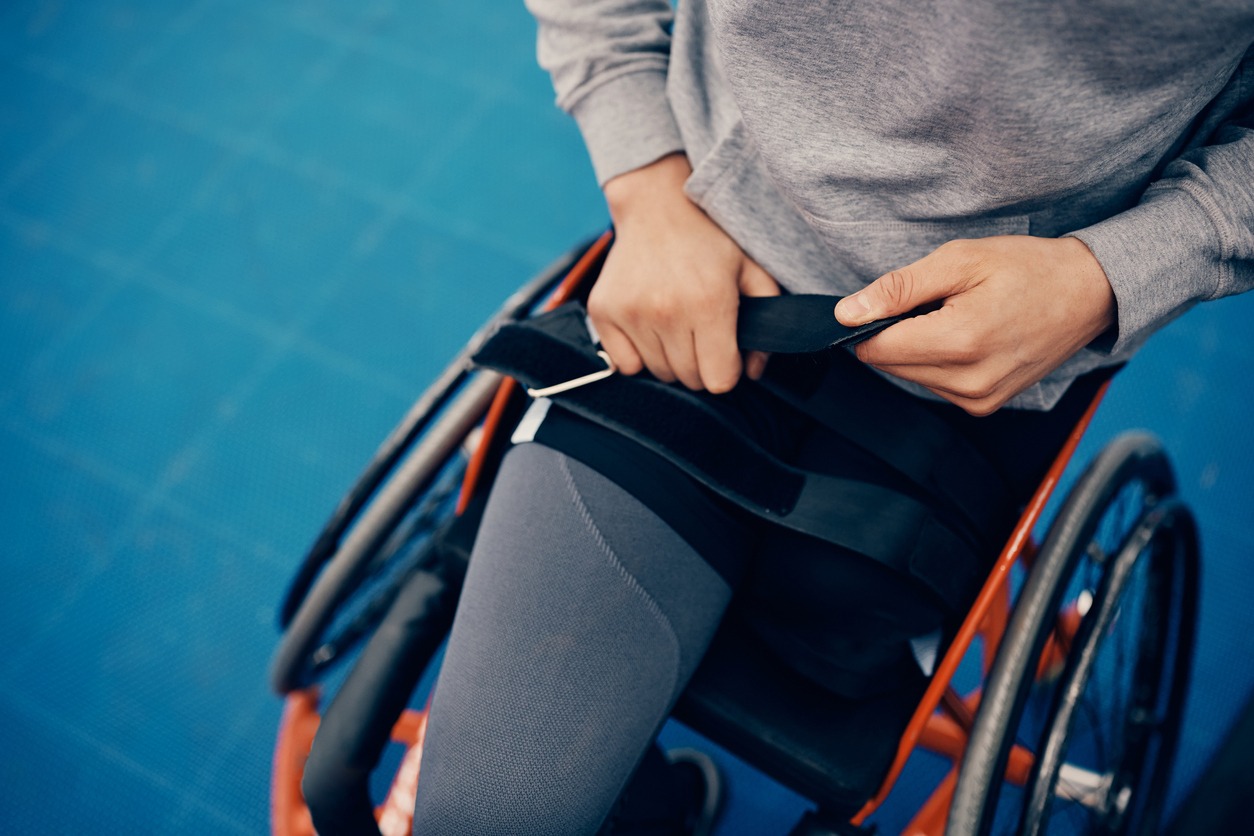Using a wheelchair is one of the best ways to help patients and seniors with mobility issues to go from one place to another. But when using one, you also need to make sure that they are safe. When it comes to wheelchair safety, seat belts play an important role in ensuring the security and well-being of wheelchair users. Wheelchair seat belts are made to provide support, stability, and restraint during wheelchair mobility. They help minimize the risk of injuries and accidents.
If your patient or loved one often uses a wheelchair and you want to ensure that they are safe all the time, then using wheelchair seat belts is one of the best solutions. However, note that there are different types and options out there when it comes to wheelchair seat belts, and sometimes, choosing one can be challenging. That is why in this article, we are going to provide you with an overview of the different types of wheelchair seat belts along with the important factors that you need to consider to be able to make the best choice. If you are ready to learn, read on as we’re giving you a guide to choosing wheelchair seat belts.
What are Wheelchair Seat Belts?
Before we provide you with the different types of wheelchair seat belts, let us first further understand what they are. Wheelchair seat belts are personalized restraints that are made to secure individuals seated in a wheelchair. They are important safety devices that help prevent the patient from sliding out of the wheelchair or experiencing excessive movement that may lead to falls or injuries.
Most seat belts for wheelchairs are made of durable materials, such as polyester webbing or nylon, and have adjustable buckles or fasteners. Also, note that wheelchair seat belts are subject to specific legal requirements and safety standards that vary by jurisdiction. The goal of these regulations is to ensure the safety of wheelchair users during transit.
Therefore, it is also important to be familiar with the applicable laws and standards in your region to make sure that you are complying when choosing a wheelchair seat belt. For example, safety standards may include specifications when it comes to durability, strength, and buckle release mechanisms.
Important Factors to Consider When Choosing Wheelchair Seat Belts
Picking the right wheelchair seat belt needs careful consideration of important factors. This way, you’ll be able to provide your patient or loved one with the best type of wheelchair seat belt for his or her needs and preferences. To help you, below are some of the essential factors to consider when choosing wheelchair seat belts:
Patient’s Level of Mobility and Independence
It is very important that you consider the mobility level of the patient and his or her ability to independently fasten and release the seat belt. There are some patients that may need assistance, while others may prefer more accessible options, such as hook-and-loop or magnetic fasteners. Therefore, always see to it that the type of wheelchair seat belt that you use is suitable for the level of mobility and independence of your patient or loved one.
Physical Considerations and Medical Conditions
You also have to take into account the patient’s strength, posture, and other specific physical considerations. For instance, if your loved one has limited upper body strength, he or she may benefit from seat belts that feature padded shoulder straps for added support. Or people who have limited trunk control may require chest belts that provide additional upper-body support.
Materials and Padding
You should evaluate the materials that are used in the seat belt construction. Make sure that they are durable, comfortable, and non-irritating to the patient’s skin. It is also great if you can find seat belts that have enough padding at pressure points to increase comfort for the patient.
Adjustability and Customization Options
It is also important to pick wheelchair seat belts that offer adjustability to accommodate various body sizes and shapes. There are seat belts that feature adjustable strap lengths and added accessories that may help ensure an optimal fit.
Buckles and Fastening Mechanisms
When choosing wheelchair seat belts, it is also important to consider the ease of use when it comes to buckles and fastening mechanisms. Try to find one that has an intuitive, user-friendly buckle that can be secured and released easily. This way, it will be convenient for both the patient and the caregiver.
Maintenance and Cleaning
It is essential that you evaluate the maintenance requirements and ease of cleaning the wheelchair seat belt you are buying. Try to find one that can be machine-washed or can be cleaned easily just by wiping. This way, you can easily maintain it and ensure good hygiene for your patient or loved one.
Mounting Options and Wheelchair Compatibility
Of course, you need to make sure that the seat belt you are getting is compatible with the specific wheelchair model your patient or loved one is using. Check the available mounting options, including wheelchair frame attachment points or hook-and-loop straps. Make sure that there is a secure and reliable connection.
Vehicle Compatibility and Anchoring Systems
If the wheelchair is often used in a vehicle, you should also consider the compatibility of the seat belt with the anchoring systems of the vehicle. These include wheelchair restraints or wheelchair tie-downs.
By considering these factors, you’ll be able to choose a wheelchair seat belt that meets the unique needs of the user, promotes safety, and ensures comfort. In addition to that, you may also consult with healthcare professionals or mobility experts to learn more about the specific guidelines tailored to the patient’s needs.
Different Types of Wheelchair Seat Belts
When choosing wheelchair seat belts, it is important to be aware of the various types available. Each type of seat belt offers specific features and advantages. To further help you choose, below are some of the most common types of wheelchair seat belts that you can choose from:
Lap Belts
Lap belts for wheelchair use are made to secure the lower body of the patient by fastening them across the lap. Most lap belts have a strap that wraps around the waist of the user and connects to the frame or anchor points of the wheelchair. They are commonly used to prevent the patient from forward sliding or tipping out of the wheelchair.
The best thing about lap belts is that they are very easy to use. In addition to that, they are also cost-effective and can provide a basic level of stability to patients. Lap belts are great for patients that have good upper body control and mobility. However, note that this type of wheelchair seat belt only secures the lower body of the patient. It means that they may not give sufficient upper body support or prevent lateral movement.
If you are going to choose lap belts, you have to consider the patient’s mobility level and ability to self-fasten. It may also require additional upper-body support or lateral stability. Below are some examples of lap belts for wheelchairs to help you pick:
- Bonberland Wheelchair Lap Belt
- Wheelchair Seat Belt Safety Harness by Secure Safety Solutions
- LITEMATIRA Wheelchair Seat Belt for the Elderly and Disabled
- Drive Medical Wheelchair Seat Belt
- DMI Wheelchair Seat Belt and Safety Harness
Chest Belts
Chest belts for wheelchairs are also called shoulder straps or torso belts. They are made to secure the upper body by wrapping around the chest of the patient to the wheelchair frame or anchor points. This type of wheelchair seat belt offers support and helps prevent the patient from leaning forward or sideways.
One of the best things about chest belts is that they provide upper body stability, which can also help enhance posture and positioning. They are great for people who have limited trunk control or those prone to leaning forward. However, chest belts are unable to address lower body stability or provide restraint against forward tipping.
If you are thinking of using chest belts, you have to consider the need for upper body support and stability, as well as the comfort and preference of the user for shoulder straps. Below are some examples of chest belts for wheelchairs that might help you choose:
- Jeelathy Wheelchair Seat Belt with Chest Waist Band
- The Rainbow Star Wheelchair Harness Seatbelt with Vest Straps
- HYNG Wheelchair Vest Restraint Medical Chest Harness
- Wheelchair Safety Belt for Elderly and Disabled
- Moocard Wheelchair Safety Belt with Easy Release Buckle
Four-Point Harnesses
Four-point harnesses use a combination of lap belts and chest belts to provide comprehensive restraint and support for patients. They usually have two straps that secure the lower body and two straps that secure the upper body. These are connected to anchor points or the wheelchair frame.
The great thing about four-point harnesses is that they offer both lower and upper body stability and prevent forward sliding, tipping, or leaning. This type of wheelchair seat belt provides a higher level of security and support for patients. However, it is also more complex to adjust and use compared to individual lap or chest belts.
If you are going to use a four-point harness, you need to ensure that the patient is able to adjust and fasten the harness comfortably. Below are some examples of four-point harnesses for wheelchairs to help you pick:
- QEES Wheelchair Harness Restraint Safety Belt
- AOSSA Wheelchair Seat Belt Restraints for the Elderly
- Fanwer Wheelchair Seat Belt with Adjustable Straps
- Vermegel Wheelchair Safety Belt with Adjustable Strap
- YHK Wheelchair Safety Belt for Elderly Patients
Additional Considerations When Choosing Wheelchair Seat Belts
When choosing wheelchair seat belts, there are several other factors that you need to consider, which will help you make a well-informed decision that aligns with your preferences, needs, and budget. Below are some of them:
Personal Preferences and Feedback
It is important to consider the personal preferences of the patient. Always consider their comfort, ease of use, and other specific requirements that they may have. As much as possible, involve the patient in the decision-making process, as this will ensure their satisfaction and willingness to use the seat belt whenever they need to be in their wheelchair.
Cost and Budget
In order for you to explore many options, you also have to determine your budget for wheelchair seat belts. Cost is not the sole determining factor when it comes to choosing a wheelchair seat belt, but it is important to find a balance between affordability and quality. When picking a wheelchair seat belt, always consider long-term durability and value for money.
Warranty
It is essential to check the warranty offered by the supplier or manufacturer for the wheelchair seat belt. When a product has a reliable warranty, it can provide you with peace of mind and protection against certain issues or defects.
Conclusion
Using wheelchair seat belts is indeed helpful when it comes to keeping patients safe while using their wheelchairs. They ensure that the patients will not fall or lean forward during transport. Choosing the right seat belt for wheelchairs is important to make sure that the patient is safe, comfortable, and stable. By understanding the various types of wheelchair seat belts available and considering important factors, you’ll be able to make an informed decision when buying one. If you are still unsure of what type of wheelchair seat belt to get, consulting healthcare professionals and mobility experts for personalized guidance for individual needs may also help. We hope this article helped you learn more about choosing wheelchair seat belts.




